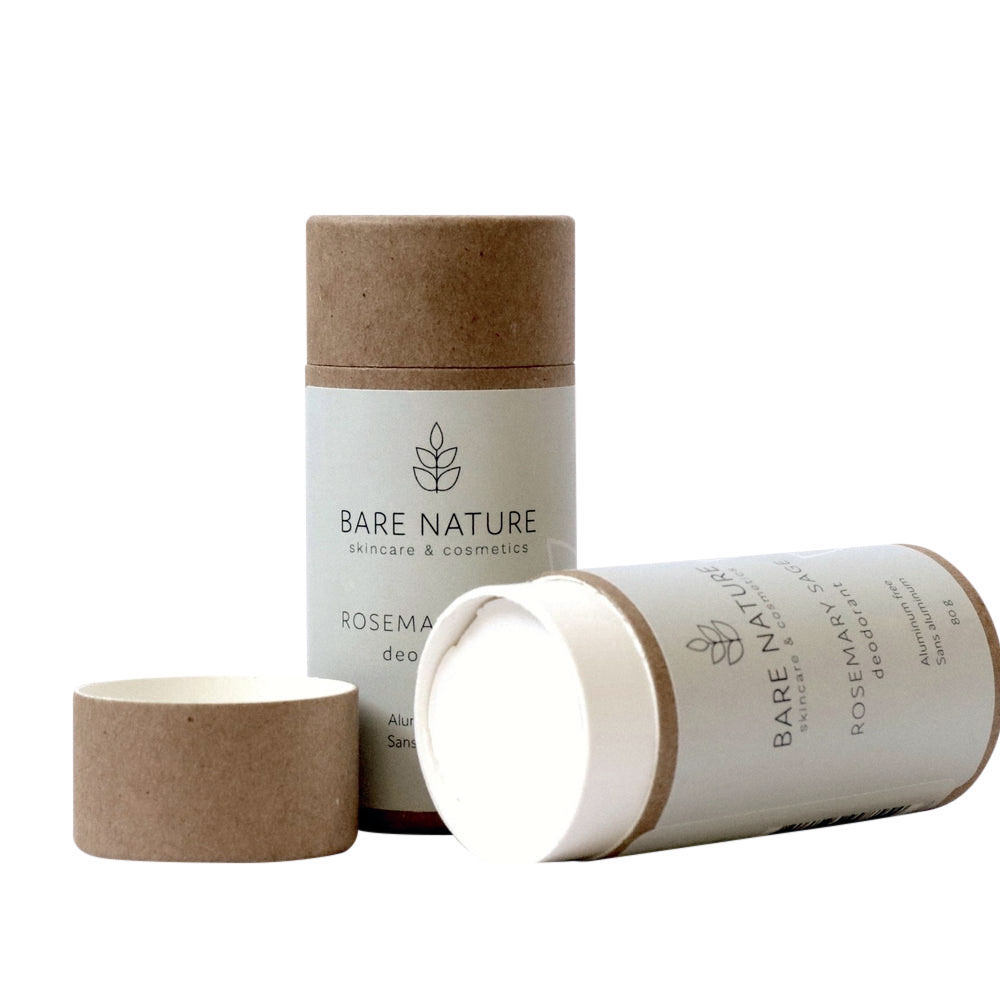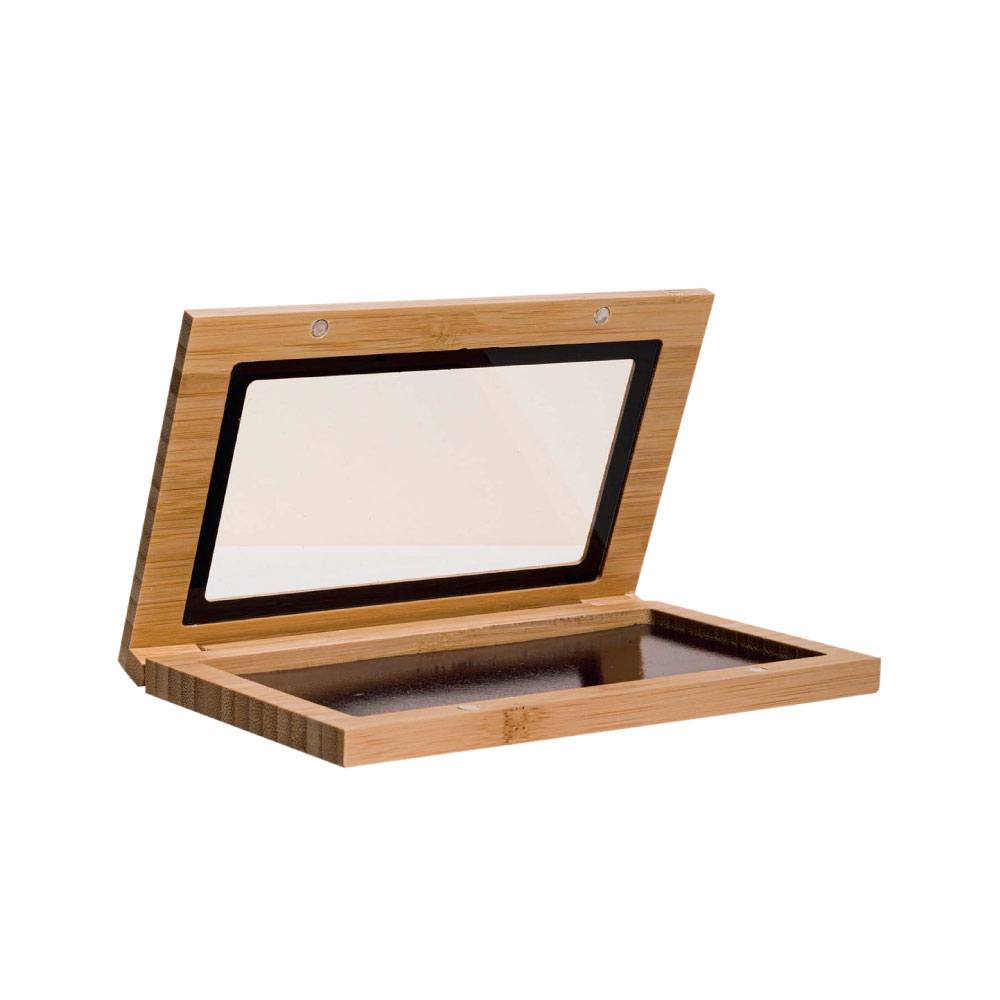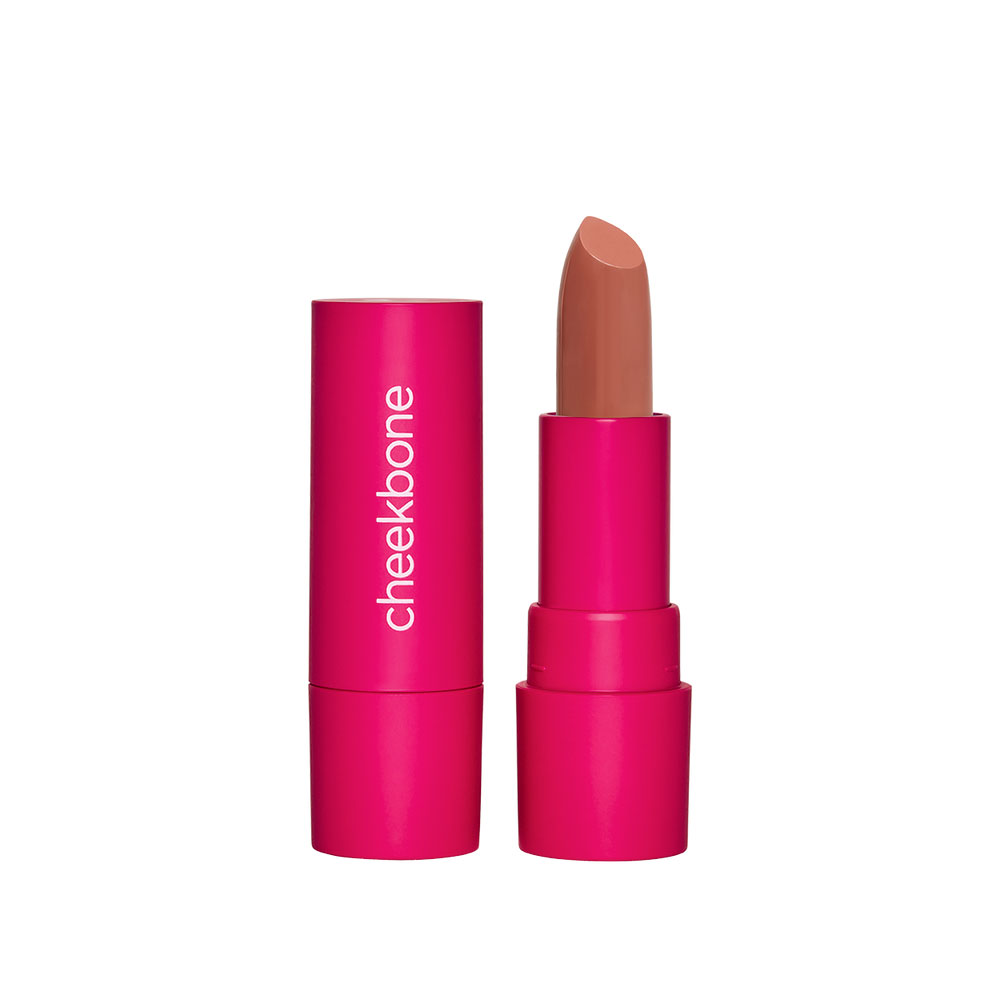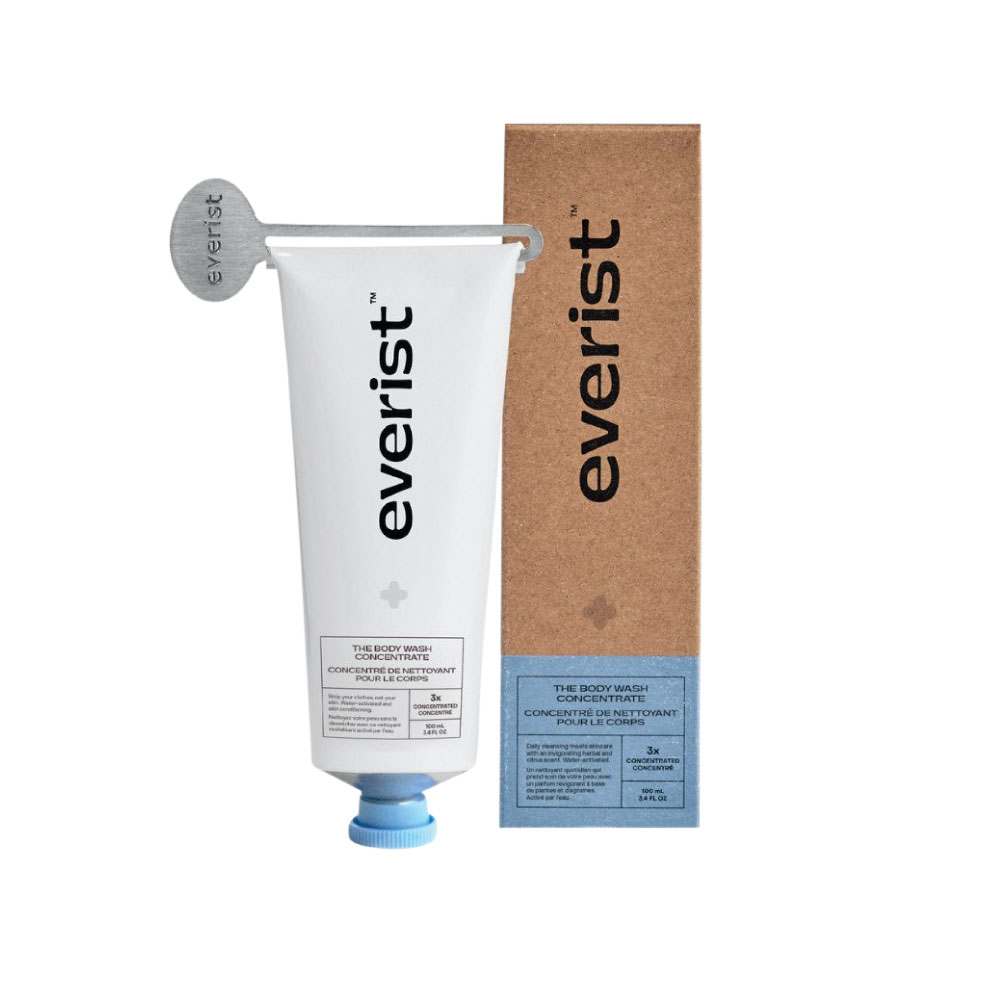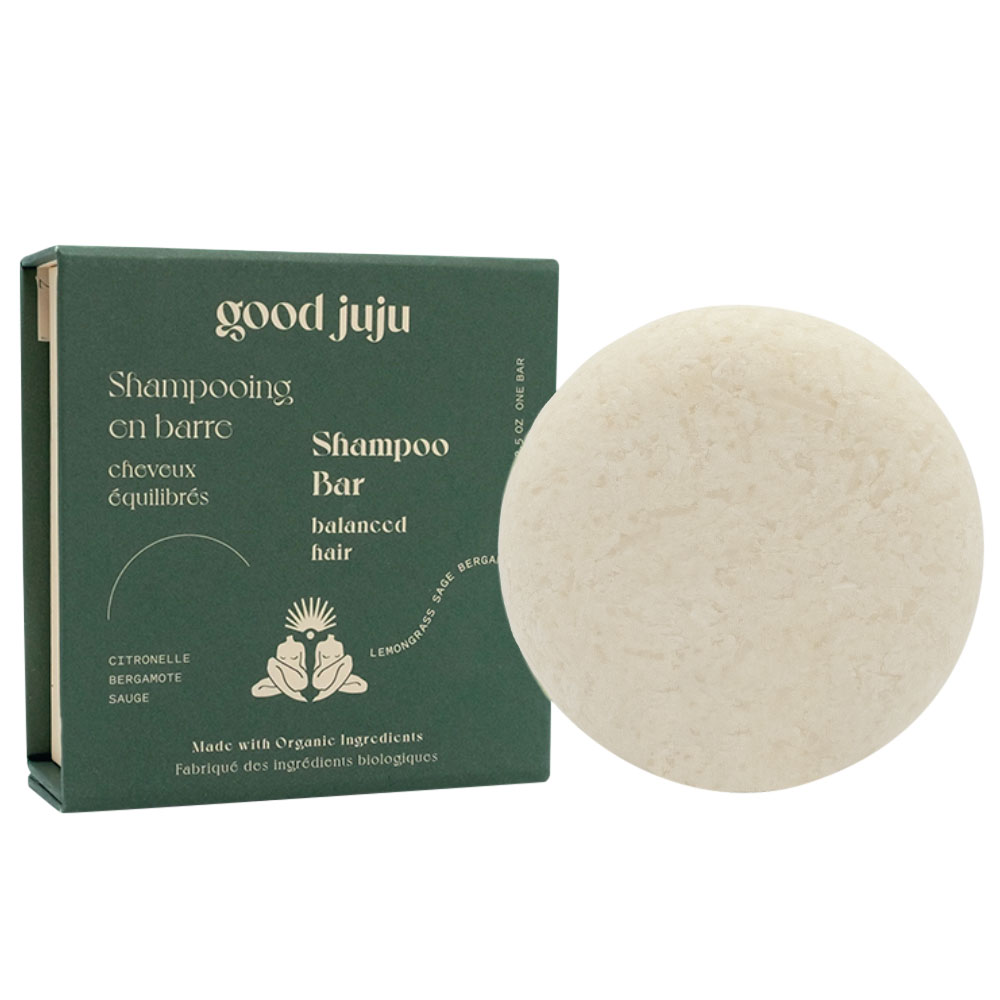Beauty
What Beauty Packaging Is Actually Sustainable?
We sought out leaders in the field to help us get to the bottom of the blue bin once and for all.
by : Victoria Christie- Apr 19th, 2024
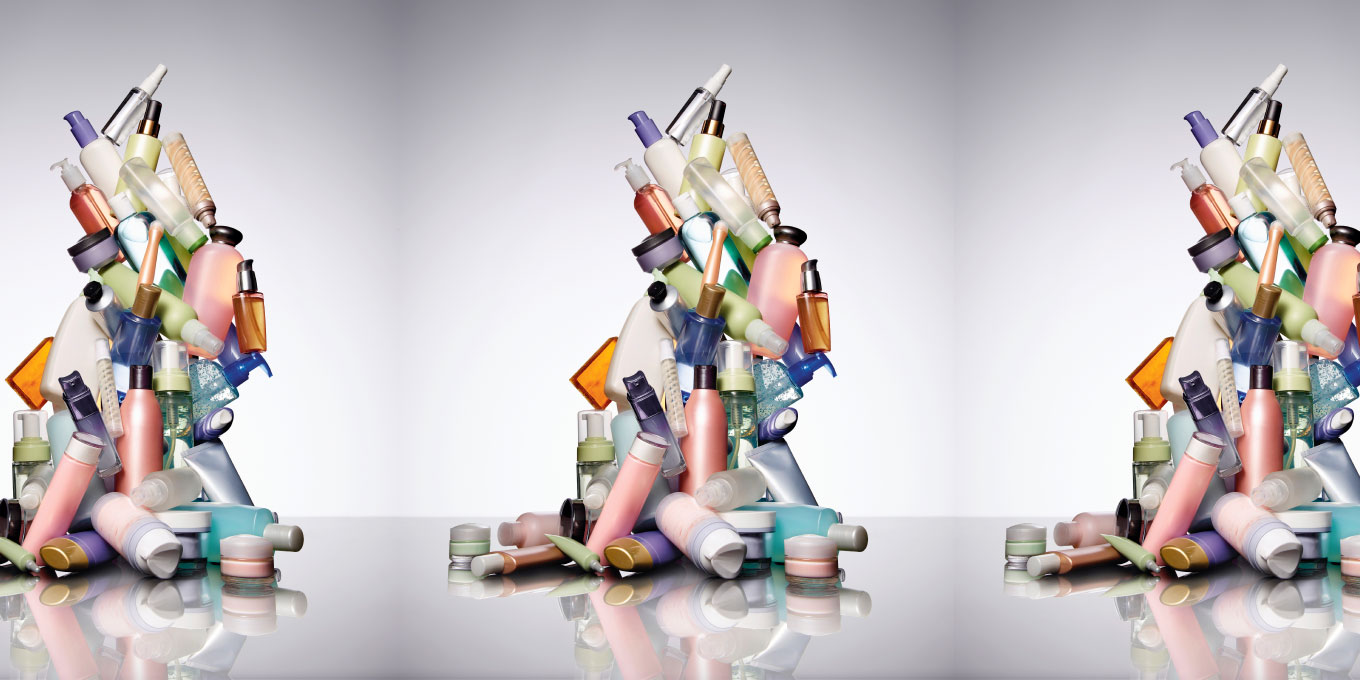
Getty Images
“To recycle, or not to recycle, that is the question.” That’s how the famous Hamlet soliloquy goes, right? Look, we’ve all been there: You’re standing in your kitchen with an empty serum bottle in your hand. It’s made out of glass but has a plastic pump with a metal spring inside it. You’re not sure which parts can be recycled, so you toss the whole thing in the blue bin and hope for the best. You did your part to be a more conscious consumer, right? You even took the time to rinse it out! Unfortunately, it’s not that simple.
“We call that ‘wish cycling’—it’s something we all do,” says Melodie Reynolds, founder of Elate Beauty, a brand of ethically made cosmetics with a mail-back recycling program. The problem is that recyclers are for-profit businesses. Their goal isn’t to save the planet but to maximize the money they can make from what’s in your bin. So anything that slows down the process or contaminates the other materials is getting tossed in the garbage instead.
Let’s go back to that serum bottle, for instance. Yes, glass, plastic and metal are all technically recyclable, but a lot of facilities don’t accept mixed-material items (practices vary widely from one city to the next) because they don’t consider it worthwhile to separate all the components. And if they do, they might deem the type of plastic used for the pump not valuable enough, so off to the landfill it’ll go.
It’s estimated that the global beauty industry produces 120 billion units of packaging annually, most of which isn’t recyclable to begin with, as reported by Zero Waste Week. As more and more consumers call for greener options, brands are increasingly making efforts to curb their impact on the planet through initiatives like in-store and mail-back recycling programs and refillable, waterless or solid products. But for a lot of shoppers, striving to be more eco-friendly remains a challenge. According to 2022 research from Mintel, 83 percent of Canadians say it’s hard to know what the most sustainable choice is. And get this: 35 percent say they generally ignore sustainability messaging. Why? Because there’s so much greenwashing going on and so many misconceptions swirling around about what truly gets recycled and what ends up getting trashed by sorting facilities. Eager to clear up the confusion, we sought out leaders in the field to help us get to the bottom of the blue bin once and for all.
“It’s estimated that the global beauty industry produces 120 billion units of packaging annually, most of which isn’t recyclable to begin with, as reported by Zero Waste Week.”
THE MOST SUSTAINABLE OPTION
You guessed it: reducing your consumption altogether. “Impulse purchases control what’s in your cosmetics bag,” says Reynolds. “Beauty companies marketing their products want to make you feel ‘less than’ so you’ll buy more. These tactics start the cycle of overconsumption.”
Katherine Pazakis would know. Before becoming chief commercial officer at TerraCycle, a company specialized in recycling materials that usually aren’t recycled, she worked in beauty for nearly a decade, occupying senior roles at Estée Lauder and Glossier. “We always start with the three R’s: reduce, reuse, recycle—in that order,” she says of advice on how to be greener. “The best thing we can do for the planet is reduce consumption and packaging.”
SOLID PRODUCTS
THE PROS- They often eliminate packaging altogether, which is “the best pathway toward reduction in beauty,” says Pazakis. Solid products can decrease water use and make product transport more efficient too.
THE CONS- Consumers are less likely to go packageless because it’s a big departure from what they’re used to. Plus, many large companies aren’t willing to change their business models, says Lisa Karandat, co-founder of Good Juju, an all-natural brand of zero-waste solid products. “Getting rid of the products in plastic bottles is not likely to be something they have an appetite for until smaller brands prove that it’s not just a trend. It is also much more expensive to operate a sustainable business, and until shareholder value starts to recognize the environment, they’ll be slow to change.”
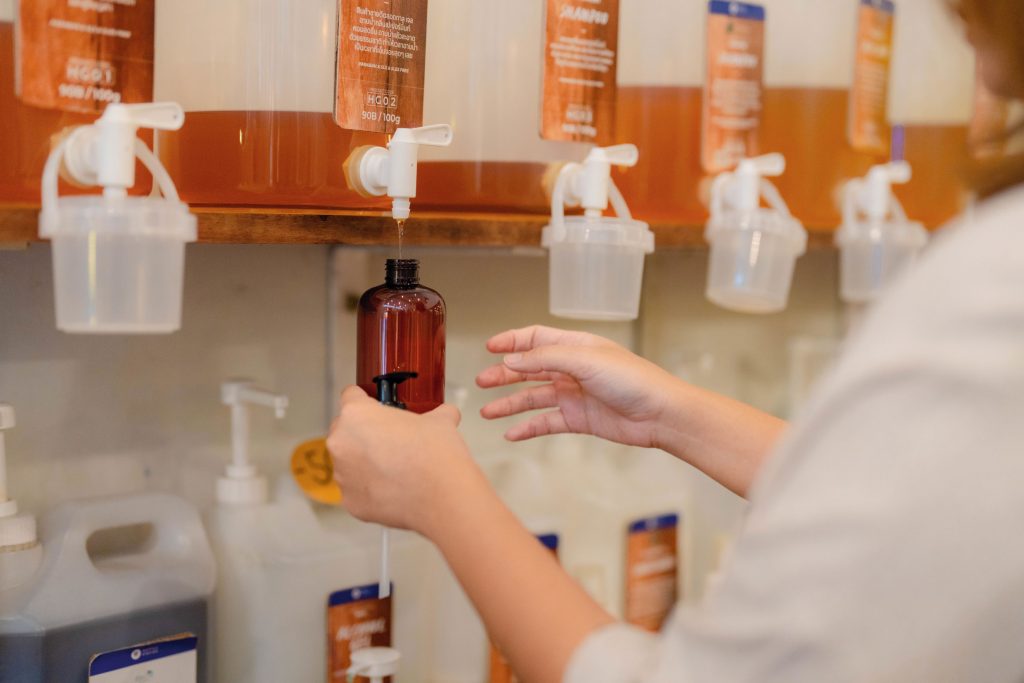 Getty
GettyREFILLABLE PACKAGING
THE PRO- It reduces the use of single-use plastics because you’re not discarding the entire package.
THE CONS- Be careful of what the refills come in. “Creating a refillable bottle made of plastic is not necessarily a more sustainable option,” says Sarah King, head of the Oceans & Plastics campaign at Greenpeace Canada. Pazakis agrees: “The goal isn’t to create two packages.” Make sure the product comes in minimalist, recyclable packaging—bonus points if you can take it to be refilled in-store. It’s also important to think about the item’s end-of-life solution. Some refillable products rely on magnets, which aren’t easily recyclable, explains Pazakis.
COMPOSTABLE PACKAGING
THE PRO- It breaks down into water, biomass and carbon dioxide within 90 to 180 days of disposal.
THE CONS- “Compostable packaging is still a form of single-use packaging and should therefore only be considered if a reusable or package-free option is not possible,” says King, who adds that “many jurisdictions in Canada are ill-equipped to process large volumes of compostable packaging.” And even if they can process them, do these composters actually want compostable beauty products? “Those things typically take longer to break down in compost than organics do,” explains Pazakis. “They also devalue that compost because there’s no nutritional value in them. If you put them in your trash, they’re not going to compost. Biodegradable plastics and compostable products need certain conditions, like light, air and organic matter, to decompose.”
RECYCLABLE CONTAINERS
THE PRO- They’re a better option than those that go to the landfill or get incinerated. “Recycling honours the molecules of the virgin materials, and it keeps [the materials] in circulation longer,” says Pazakis.
THE CONS- As mentioned earlier, beauty-product packaging is often made out of multiple materials. For example, your body-lotion bottle could be made from PET (polyethylene terephthalate) plastic but there’s a metal spring and different types of plastic in the pump that need to be separated or are not recyclable at all. “Multi-layered packaging is typically sent to landfill or burned,” says King. “When it is recycled, usually some of the material is recycled and the rest is discarded.” Check the labels on your products and the brand’s website, which should have information about how to properly dispose of its products.
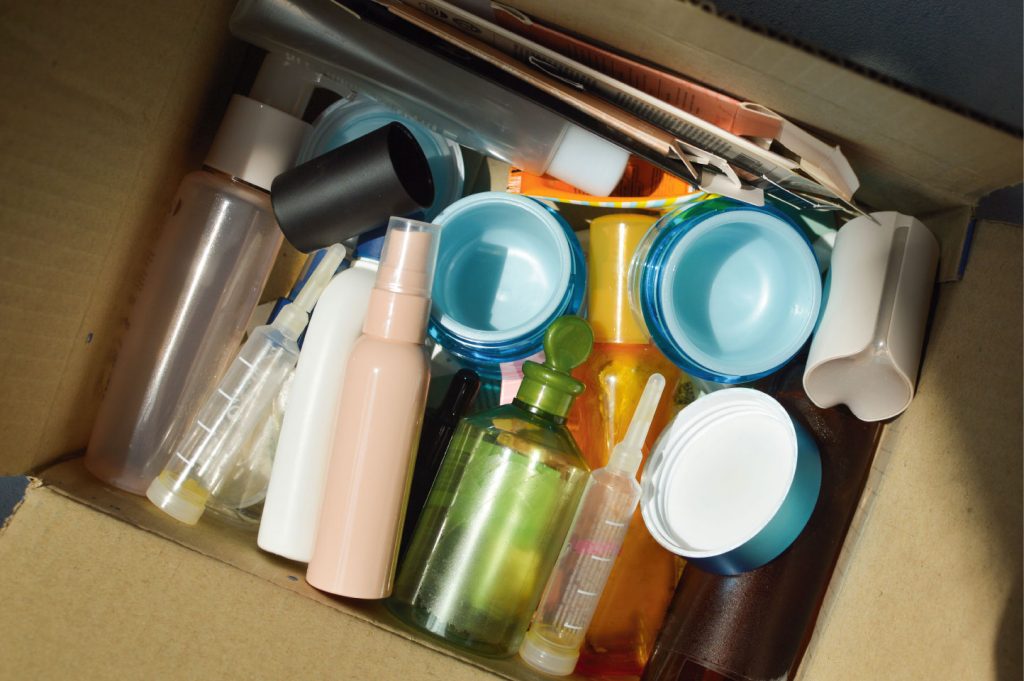 Getty
GettyBut what packaging is made of is only part of the equation. There’s also the issue of leftover product in the containers (the sticky residue at the bottom of your shampoo bottle or the dried gunk in an old nail-polish bottle)—no matter how well you clean it—which can deter recyclers. Even worse, if a product has leaked into your recycling bag, the whole lot might be deemed contaminated and tossed. Size also matters when it comes to recycling. If mechanically sorted, small containers can get missed by machines and thus end up in the trash. The bottom line? The odds are not in beauty consumers’ favour.
That’s why recycling businesses like TerraCycle and Pact Collective are a helpful alternative to curbside programs. They partner with major brands and retailers like L’Oréal, Sephora and M·A·C to recycle your empties. But, according to King, these initiatives aren’t a fix-all solution. “It doesn’t mean it will all be recycled. The company needs to ensure that every product or package is returned and kept in a recycling loop.”
At TerraCycle, all compliant waste gets recycled, Pazakis assures us. First, the company does a visual and manual inspection of the load to make sure there’s no trash in it. Then the products get washed, shredded and sorted and put under an infrared sensor to identify which type of plastic each item is made of. Metals are separated with magnets, and glass particles are pulverized and used for recycled glass. “It’s a complicated process because [cosmetics] products can have so many different materials in them,” says Pazakis.
It’s also complicated for shoppers, who can feel like there’s really no “right” option (aside from not buying any- thing ever again, which, let’s face it, just isn’t realistic). But the onus shouldn’t fall solely on the consumer, says King. “Communicating to your favourite brands and retailers that you want zero-waste and sustainable, socially responsible products can be extremely impactful and help shift business practices. Consumers have power through their voices and their dollars.”
MATERIAL CRASH COURSE
+ ALUMINUM is considered high value in the recycling world. It is light and doesn’t rust, so recycling companies want to collect and sell it because they can turn it into a profit.
+ GLASS is also of high value in some cities. It’s a great option because it’s usually easy to sanitize, but not all jurisdictions recycle it.
+ CARDBOARD is, in theory, a highly recyclable material. However, many facilities don’t recycle soiled or greasy paper or cardboard or waxed paper. Also, most global paper and cardboard production is still done with virgin fibre, meaning it contributes to deforestation.
+ Time for the big one now: PLASTIC. Canadians throw away about 3.3 million tonnes (the weight of 25 CN Towers) of it each year, and only 9 percent gets recycled, according to a 2019 study commissioned by Environment and Climate Change Canada. What is recycled is mostly downcycled, meaning it’s turned into a lesser-quality product, says King.
+ The kind that’s most likely to get recycled is PET, or TYPE 1 PLASTIC, which is clear, strong and lightweight. But King notes that it’s an inherently flawed material that will eventually become waste because it breaks down over time.
+ COLOURED PLASTIC has a lower resale value because the pigment can’t be removed, making it less attractive to prospective buyers. That’s why many facilities will only bother recycling the clear or white kind—there’s more demand for it. So chances are your bright-blue shampoo bottle, even though it’s technically recyclable, is heading to the landfill.
+ STYROFOAM is one of the least-profitable plastics, according to Pazakis, because it slows down the recycling process—hence why it’s usually not curbside recyclable.
GREEN GIANTS
Hand in your empties and clear your conscience with these beauty-product recycling programs.
L’ORÉAL Drop-offs are available at Walmart, London Drugs and Shoppers Drug Mart. Though the program is funded by L’Oréal, all brands are accepted.
SEPHORA Visit any Sephora store and drop your empties in the dedicated collections bin. Products may be repurposed into carpets, pallets, asphalt or new packaging.
HUDSON’S BAY Get $5 in Hudson’s Bay Rewards points for every five containers you bring back.
HOLT RENFREW You’ll find recycling boxes where you can deposit finished products in the store’s Beauty Hall. Empties get sorted and separated into various materials and then used to create new products.
WINNERS You can bring in everything from plastic bottles and jars (which must be smaller than 60 millilitres) to squeezable tubes, mascaras and lipsticks.
M·A·C COSMETICS Your clean compact or lipstick bullet will be shredded, washed, re-pelletized and recycled into new materials, or it’ll become a new M·A·C product. And packaging that can’t be recycled will be turned into energy.
L’OCCITANE EN PROVENCE Save 10 percent when you recycle in-store. You can also refill any liquid product in a L’Occitane Forever Bottle at the brand’s refill fountains located in the Pacific Centre, Richmond Centre and Toronto Eaton Centre stores.
THE DETOX MARKET Get 10 Detox Points for every full- sized product you recycle. (There’s a limit of 10 products per customer, per visit.)
TERRACYCLE Participating brands include Burt’s Bees, Eos, Göt2b, Living Proof, Paula’s Choice, Schwarzkopf and Weleda. Just print off a prepaid label and pop your empties in the mail. Bonus: You don’t have to worry about cleaning out containers (because we all know how impossible it is to get that mascara tube squeaky clean).
SHOP THE STORY
Eco-minded products that are good for you and the planet.
The Compostable
Yes, every single part of this natural deodorant is compostable—from the paper tube to the label, which is made from earth- friendly, photodegradable paper. Go ahead and toss it in your organics bin!
The Imperfect
These refillable bamboo palettes have minor cosmetic flaws (think small dents or scratches), but it’s what’s on the inside that counts: personalized pressed creams and powders that you can swap out based on your mood
The Refillable
Bold shades, a velvety vegan formula and refillable packaging made from natural and renewable bio-based material? It’ll be love at first swipe with this lipstick from Indigenous makeup brand Cheekbone Beauty.
The Waterless
Most body washes contain 70 percent water, which is why they come in huge plastic bottles. This concentrated paste—packaged in an aluminum tube—turns into a sudsy lather when activated with the water in your shower, so you only need a tiny bit to cleanse your entire bod.
The Solid
Perfect for tossing in your gym bag or carry-on, this packageless bar is the equivalent of three bottles of shampoo— and loaded with strand-loving ingredients like coconut and argan oils, shea butter and rice protein.
Newsletter
Join our mailing list for the latest and biggest in fashion trends, beauty, culture and celebrity.
More from Beauty
Read Next

Fashion
10 Canadian Swimwear Brands to Shop This Summer
Hit the sand in style this beach season!
by : Allie Turner- May 2nd, 2024
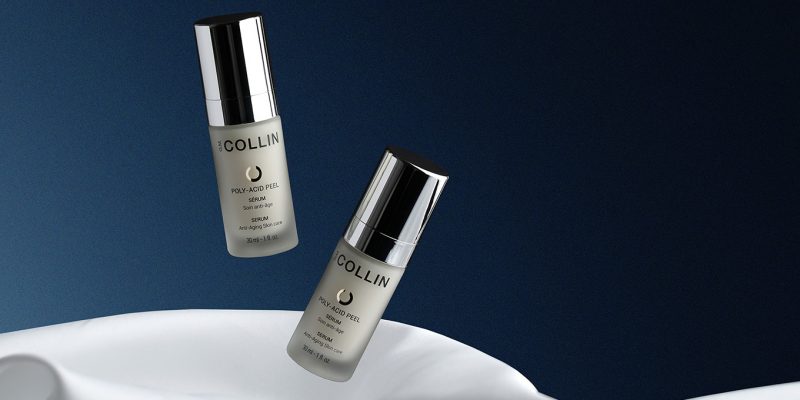
Beauty
This Exfoliating Serum Creates a ‘‘New Skin’’ Effect
Say hello to smooth, radiant skin.
by : ELLECanada.com- May 2nd, 2024
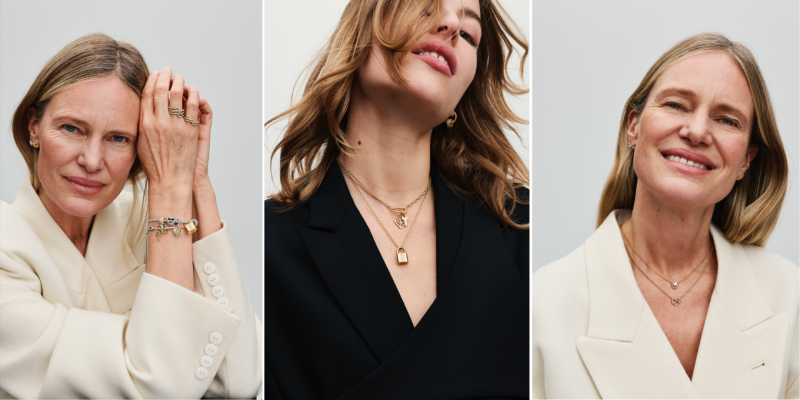
Fashion
8 Sparkling Jewellery Gifts to Give This Mother’s Day
Show your gratitude with pieces they’ll have forever and ever.
by : ELLE Canada- Apr 29th, 2024

